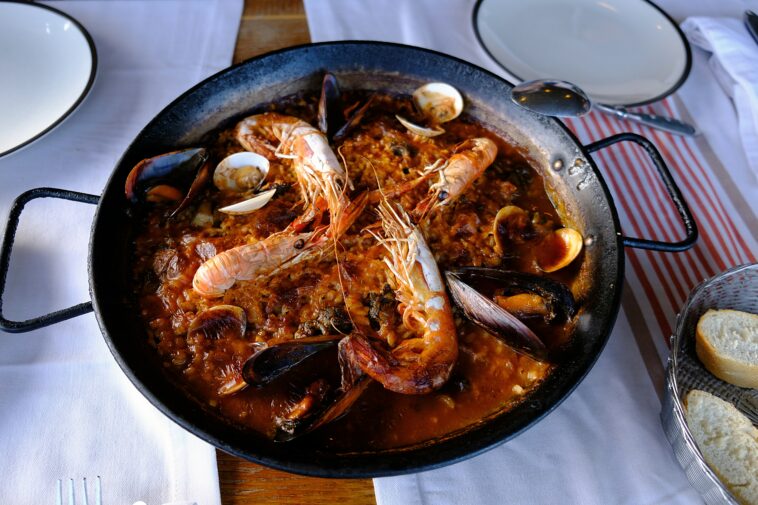Introduction:
Barbecue, a quintessential American culinary tradition, holds a special place in the hearts and taste buds of people across the United States. It’s not just about cooking meat over an open flame; it’s a cultural phenomenon deeply rooted in history, regional pride, and culinary craftsmanship. From the smoky brisket of Texas to the tangy ribs of Memphis, American barbecue is as diverse as the country itself. In this article, we delve into the rich tapestry of American barbecue, exploring its history, regional variations, cooking techniques, and the communal spirit that surrounds it.
A Brief History:
The origins of American barbecue can be traced back centuries to indigenous cooking methods. Native Americans, particularly those in the Caribbean and Southeastern regions of the United States, practiced a form of barbecuing, using pits lined with hot coals to slow-cook meats. When European settlers arrived, they adopted and adapted these techniques, incorporating local ingredients and flavors.
The word “barbecue” itself has murky origins, possibly stemming from the Taino word “barbacoa” used by indigenous peoples in the Caribbean. Over time, barbecue evolved into a social event, with communities coming together for large outdoor gatherings centered around the roasting of meats.
Regional Variations:
One of the most fascinating aspects of American barbecue is its regional diversity. Each part of the country boasts its own unique style, influenced by factors such as available ingredients, cultural heritage, and cooking traditions.
In Texas, barbecue is all about beef, particularly brisket. Pitmasters in the Lone Star State take pride in their mastery of slow-smoking techniques, producing tender, flavorful brisket with a thick, peppery bark. Central Texas-style barbecue, popularized by places like Austin and Lockhart, emphasizes simplicity, letting the quality of the meat shine through.
Traveling east to the Carolinas, barbecue takes on a different character. Here, pork is king, and the preferred cut is often the whole hog. North Carolina is known for its vinegar-based sauces, while South Carolina adds a touch of sweetness with mustard-based sauces. Eastern North Carolina barbecue is characterized by its use of whole-hog cooking and a thin, vinegar-pepper sauce, while Western North Carolina tends to favor pork shoulder and a sweeter tomato-based sauce.
In Memphis, Tennessee, ribs reign supreme. Memphis-style barbecue is characterized by its dry rubs, slow smoking over hickory wood, and tangy tomato-based sauces. Memphis is also famous for its “dry” ribs, which are seasoned with a flavorful spice rub and served without sauce.
Further south in Alabama, barbecue takes on a unique twist with the introduction of white sauce. This mayonnaise-based sauce, flavored with vinegar and pepper, is typically served with smoked chicken or turkey.
Cooking Techniques:
At the heart of American barbecue are the cooking techniques that transform tough cuts of meat into tender, flavorful delights. Low and slow is the mantra, with pitmasters patiently smoking meats over indirect heat for hours on end.
Traditional barbecue pits range from simple homemade contraptions to elaborate commercial smokers, but the basic principles remain the same. Wood is the fuel of choice, with varieties like hickory, oak, mesquite, and pecan imparting distinct flavors to the meat. Pitmasters carefully control the temperature and smoke levels to achieve the perfect balance of tenderness and smokiness.
Another hallmark of American barbecue is the use of dry rubs and marinades to add flavor and tenderize the meat. These spice blends can vary widely depending on regional preferences, but common ingredients include salt, pepper, paprika, garlic powder, and brown sugar.
The Communal Spirit:
Perhaps the most cherished aspect of American barbecue is its role as a social glue, bringing together friends, family, and communities. Barbecue is not just about the food; it’s about the experience of gathering around a fire, sharing stories, and savoring the simple pleasures of life.
Barbecue joints often serve as neighborhood gathering spots, where locals come to catch up over plates of smoked meat and cold beers. Barbecue competitions and festivals draw enthusiasts from far and wide, offering a chance to celebrate and showcase the best of regional barbecue traditions.
Conclusion:
American barbecue is more than just a method of cooking; it’s a celebration of culture, community, and culinary heritage. From the smoky pits of Texas to the sauce-slathered ribs of Memphis, each region contributes its own unique flavors and traditions to this beloved culinary art form. As long as there are fires burning and meat smoking, the tradition of American barbecue will continue to thrive, uniting people one delicious bite at a time.

